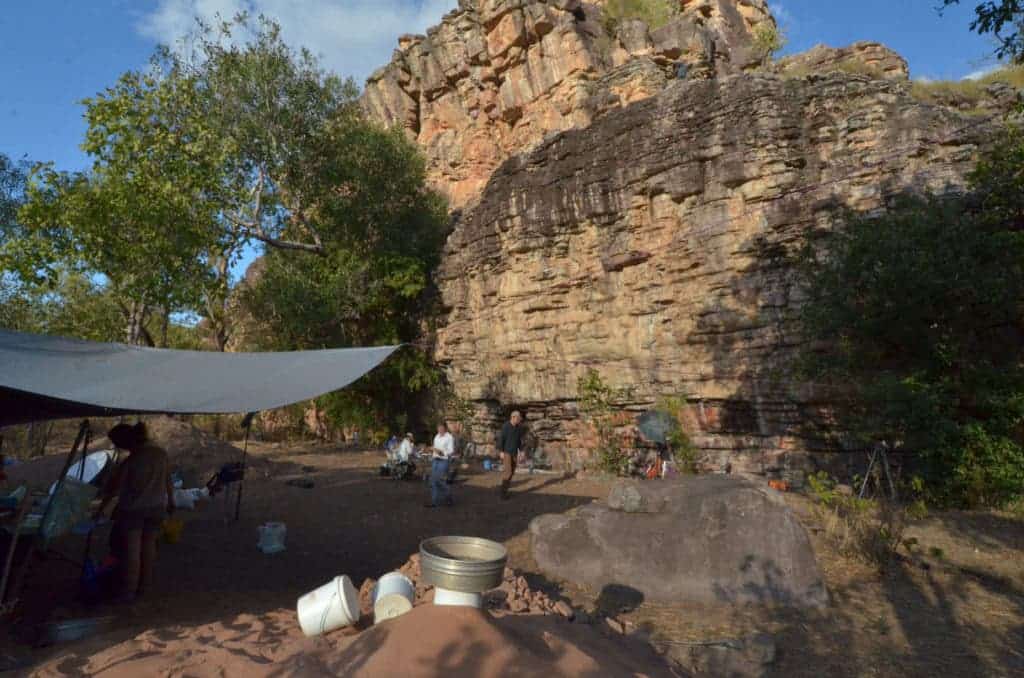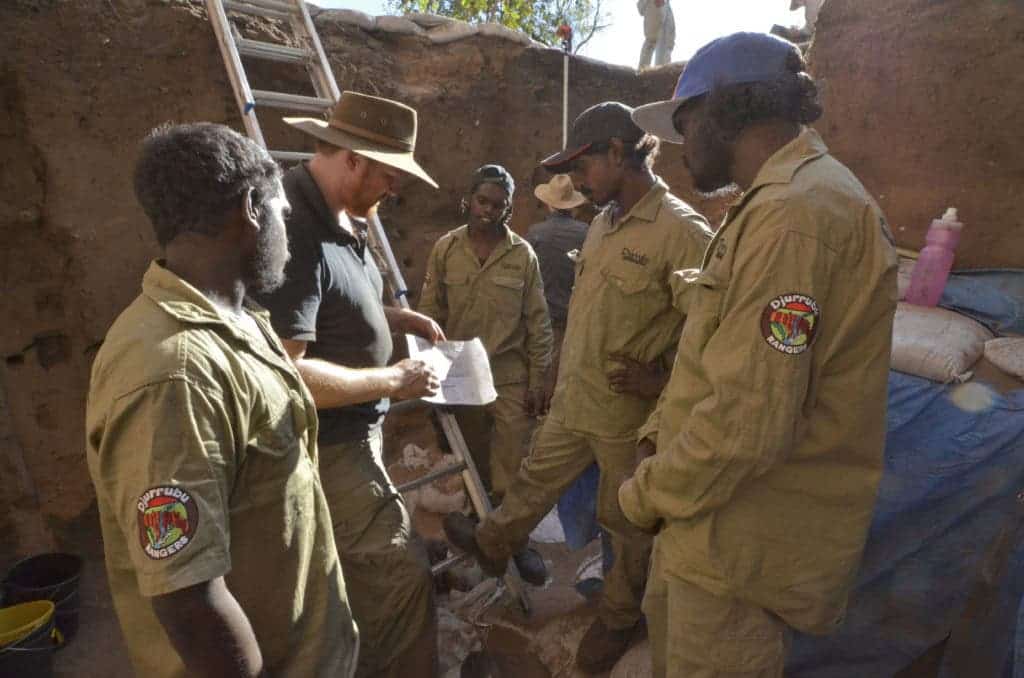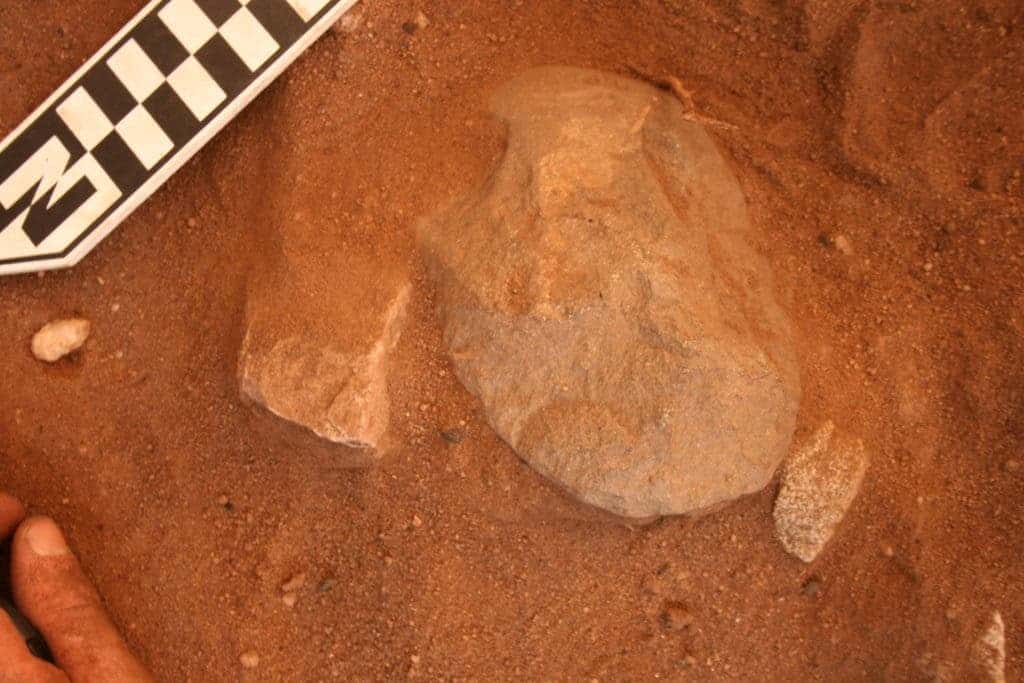Humans first arrived in the Land Down Under around 65,000 years ago, based on new evidence found in Madjedbebe, located on the traditional lands of the Mirarr people. The discovery means that Aboriginal people have been in Australia for far longer than the 47,000 years previously established by archaeologists. We’ve also learned much more about the Stone Age technology employed by these people and also the likely interactions with the continent’s now extinct animal species.

Madjedbebe is a rock shelter found in northern Australia surrounded by the World Heritage‐listed Kakadu National Park. This site has been known to archaeologists for some time and the presence of modern humans here is well established. However, the remains and artifacts retrieved from the site suggested they were between 50,000 and 60,000 years old, sparking an academic debate.
During a 2015 dig, an international team led by Chris Clarkson, an Australian Research Council (ARC) Future Fellow at the University of Queensland, recovered 11,000 artifacts including flaked stone tools, grinding stones, but also the oldest known edge-ground hatchets.
The researchers dated the artifacts by carefully measuring the age of the sediments in which they were found, using an advanced dating technique called optically stimulated luminescence (OSL). Radiocarbon dating — a method for determining the age of an object containing organic material by using the properties of carbon-14, a radioactive isotope of carbon — yields confident readings up to a maximum of 45,000 years. OSL, however, can give reliable information of more ancient timelines than the radiocarbon method by gauging the age of sediments after irradiating minerals and studying their response. This is how they learned that the deepest part of the dig is 65,000 years old, setting a new minimum age for the dispersal of modern humans out of Africa and across south Asia.
“We dated thousands of sand grains and dozens of samples from around the site using the latest and most accurate and precise optically stimulated luminesence techniques. We also coupled this with a lot of radiocarbon dates. The two techniques corroborated each other very well and allowed us to go beyond the radiocarbon barrier – the point at which radiocarbon dating is no longer effective (about 45-50,000 years) – to obtain very old dates for the site,” Clarkson told ZME Science.

The findings suggest that a daring group of Southeastern Asians set on rafts on a pioneering trip to the Australian continent earlier than 65,000 years ago. They clearly came well equipped with tools and knowledge of how to use them as evidenced by the Stone Age artifacts dug out of Madjedbebe and reported in Nature.
“The first Aboriginal people to come here were technologically, culturally and artistically sophisticated, innovative and dynamic, like all human groups on earth,” Clarkson added.

Another important implication of the new study is that this much earlier dating puts human hunter-gathers on the same timeline with the extinction of Australia’s megafauna. The Australian collection of megafauna some 50,000 years ago included 1,000-pound kangaroos, 2-ton wombats, 25-foot-long lizards, 400-pound flightless birds, 300-pound marsupial lions and Volkswagen-sized tortoises. There’s been a long-standing debate over what could have caused their demise. Some suggest that humans certainly had a role to play but then academics would point out that humans weren’t even dispersed in Australia when the continent’s megafauna first showed signs of a massive die-off.
The new dating, however, comfortable places humans and Australia’s astonishing but now extinct creatures in the same timeline. What’s more, if humans and not climate change were largely responsible for the megafauna demise, they certainly took their time. Previously, a 2006 study by Australian researchers indicated that even low-intensity hunting of Australian megafauna – like the killing of one juvenile mammal per person per decade – could have resulted in the extinction of a species in just a few hundred years.
As such, this landmark study will help us not only better understand the pace at which humans colonized Australia but also how they interacted with the peculiar animals they first encountered here. It’s worth noting that this wouldn’t have been possible without the blessing and help of the Mirrar people.
“We had to negotiate the removal of human remains with the Mirarr traditional owners before we could continue our excavations. Disturbing human remains is a very sensitive and contentious topic in Australia and it is regrettable that we had to disturb them on this occasion. Our agreement with the Mirarr people is a very strong one, and they had right of veto over the excavation at all times and could close down the site. However, they were also interested to get to the bottom of the site and so gave permission to remove the bones and rebury them at the end of the excavation. That was a really significant outcome and allowed this amazing site to the revealed to the world,” Clarkson said.






